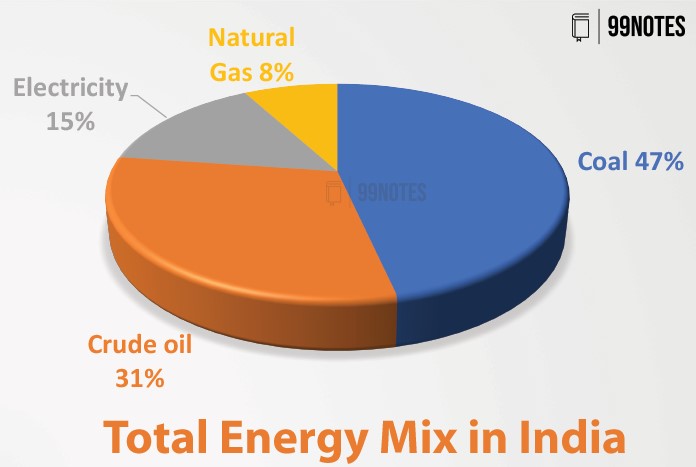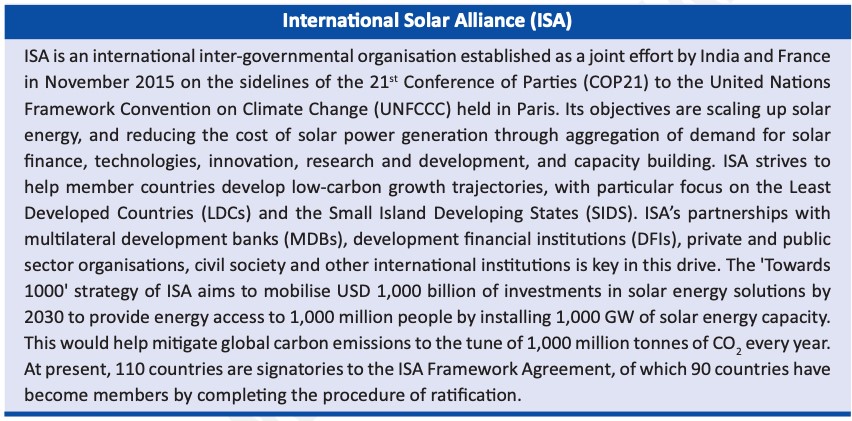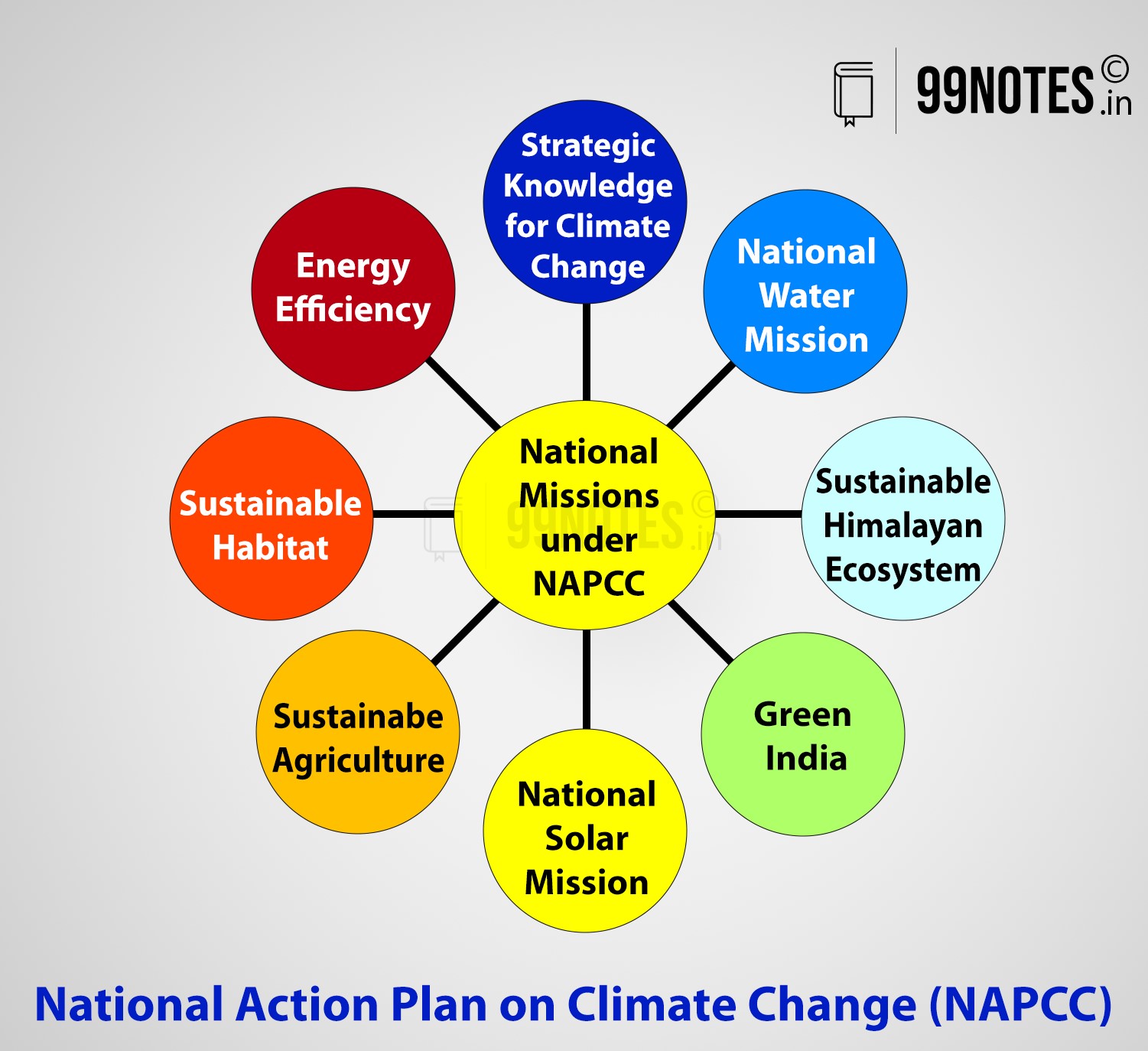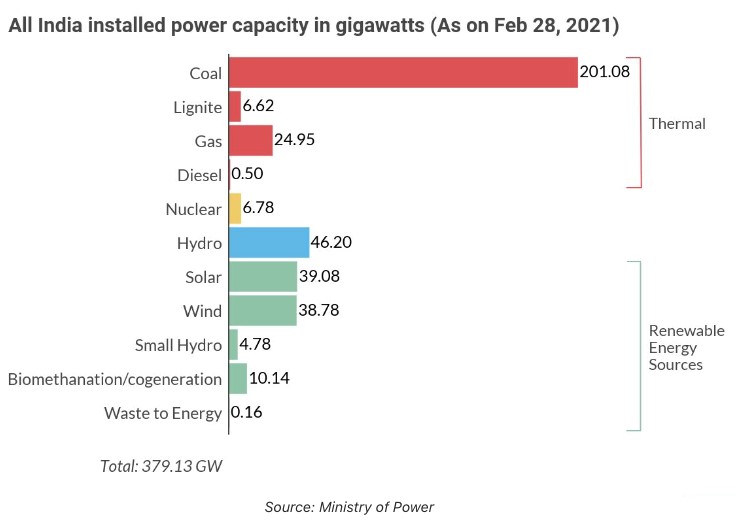Kurukshetra February 2023: Renewable Resources
Introduction to Kurukshetra February 2023: Renewable Resources:
- India has a massive energy requirement due to its rapidly growing economy and developmental needs.
- Since Independence India is heavily reliant on coal-based energy, however slowly it is shifting its focus towards sustainable energy.
- The move towards cleaner hydrogen and nuclear energy, electric mobility, and batteries can provide much-needed impetus towards India’s sustainable development commitments.
Sustainable development through renewable energy:
- Sustainable development, as defined by the Bruntdland commission, is the development that meets the needs of the present without compromising the ability of future generations to meet their own needs.
- About 47% of India’s energy needs are met through coal and lignite, 31% from crude oil, 15% from electricity and 8% from natural gas.

- Impact of fossil fuels:
- Fossil fuels pause many strategic and health challenges.
- The turbulence in the oil supply can cause disruptions in oil-consumer nations. For example, the recent Russia – Ukraine conflict.
- Further, according to the Lancet report, changing climate due to the burning of fossil fuel can affect the spread of infectious diseases and epidemics, increase the instances of extreme weather conditions and act as a hurdle in attaining SDGs.
- In this light, the development attained through the burning of fossil fuels cannot be sustainable, and exploring renewable energy sources has become eminent.
- Renewable energy:
- Currently, India is the world’s third largest renewable energy producer, with about 42% of installed electricity capacity coming from non-fossil fuel Sources.
- Solar Power: Solar power has many advantages, among which the abundance of supply, ability to generate power and distributed basis and ability for capacity addition in short time leads are prominent. In 2010, the Government of India launched National Solar Mission (NSM) with Active participation from states while addressing the energy security challenges. Covering only 3% of the wasteland with solar units can generate 768 GW of power.
- Wind Energy: States like Gujarat, Maharashtra, Tamil Nadu, Madhya Pradesh have great potential for tapping wind energy. India, with its 7500 km long coastline, also positions excellent potential for offshore wind energy projects.
- Hydropower: according to Central Electricity Authority (CEA), India has a hydropower potential of 1,48,700 MW. Only less than 30% of this potential is presently exploited despite having a long life, high efficiency and low cost.
- Biofuels: Ethanol and biodiesel are the most commonly used biofuels. The Government is implementing Ethanol Blended Petrol (EBP) programme to sell petrol blended with 10% The national policy on biofuels 2018 aims at accelerated promotion of biofuels with 20% blending in petrol and 5% in diesel.
- Green Hydrogen: When the electricity used for hydrogen generation is sourced from renewable sources, that is, without emitting CO2, it is called green hydrogen. The Government has launched a National Hydrogen Mission, which aims to make India a green hydrogen hub with a target of production of 5 million tonnes of green hydrogen by 2030.
- Ocean and Geo-thermal: Ocean energy refers to energy derived from wave energy, tidal energy and ocean thermal energy conversion. The technology development in these areas is in the research and development stage.
- International Solar Alliance:
-
- ISA’s ‘Towards 1000 strategy’ aims to mobilise USD 1000 Billion of investment in solar energy by 2030.
- Proper implementation of programmes of ISA can reduce carbon emissions to the tune of 1000 million tonnes of CO2 every year.

Powering Growth in Agriculture Sector:
- Agriculture contributes about 15% to the GDP and consumes 20% of the total power
- Biogas as a power producer for agriculture:
- Currently, more than 5000 biogas plants are operational in the country.
- It can also be used as a substitute for up to 80% in diesel engines and 100% in biogas Indians.
- The Government has launched New National Biogas and Manure Programme to provide financial subsidies and support to biogas plants.
- GOBARdhan scheme is being implemented with a twin objective of making villages clean and generating clean energy.
- Asia’s largest biogas plant is established in Sangrur.
- PM KUSUM: The Government has launched PM KUSUM scheme with the objective to provide clean energy to farmers and to enhance their income by providing an option to sell the energy generated in excess.
- Components of PM KUSUM:
- Decentralised grid-connected solar power plants.
- Installation of standalone solar-powered pumps.
- Solarisation of existing grid-connected agriculture pumps.
Decarbonisation of the Transport Sector:
- As per India’s commitments in COP26, the country would meet its 50% of energy demands through non-fossil fuel energy by 2030.
- The transport sector is one of the biggest carbon emitters across the world. India’s need for energy in the transport sector will increase by 2.7 times in the next 30 years.
- The average carbon footprint of a person in India is 0.56 tonnes per year, while the global average is 4 tonnes per year.
- To reduce the carbon footprint of the transport sector government has started FAME 2.0 scheme to provide subsidies for electric vehicles. The Government has allocated 10,000 crores for three years from 2019 to 2022.
- Also, the Government is focusing on encouraging entrepreneurship in clean energy solutions such as hydrogen energy, batteries, building infrastructure such as charging stations etc.
Mitigating Environmental Issues:
- As per the world energy Outlook 2021 report, the share of India in global energy consumption is 1%.
- Over 80% of India’s energy needs are met through three fuels: coal, oil and solid biomass.
- National Action Plan for Climate Change 2008 (NAPCC) has been prepared, which has eight missions as a multi-pronged, long-term and integrated approach towards mitigating climate change.

- PANCHAMRIT STRATEGY:
- India will get its non-fossil energy capacity of 500 GW by 2030.
- India will meet 50% of its energy requirements through renewable energy by 2030.
- Reduce total projected carbon emissions by 1 billion tonnes by 2030.
- Reduce the carbon intensity of its economy by less than 45% by 2030.
- By the year 2070, India will achieve the target of net zero.
- The Cabinet has also given approval for a production-linked incentive scheme in high-efficiency solar PV modules.
- National Adaptation Fund for Climate Change (NAFCC) is established to meet the financial needs of climate adaptation strategies.
Public Awareness About Renewable Energy Sources:
- Public awareness can be defined as the improvement of a general understanding of environmental issues with various aims, including building environmental awareness and getting public, Financial and scientific support for solving climate-related problems.
- To bring behavioural change in citizens’ lifestyles, the Prime Minister proposed Mission LiFE. Mission LiFE encourages people to use bicycles and public transport whenever possible, reducing water wastage, saving energy and such other changes.
Transition Towards Clean Energy:
- The term “energy transition” refers to the change in the energy sector away from fossil-based energy production and consumption to renewable energy sources such as wind and solar.

- Public spending on R&D in clean energy increased to 670 million in 2019.
- In order to expedite the the transition towards clean energy, the Government is ensuring proper accessibility of new technology to the industries, transforming energy consumption patterns in the agriculture sector, provision of credit for the adoption of technology and improving R&D in the clean energy sector.
Renewable Energy Transforming Rural Woman:
- The energy sector’s gradual transformation in rural India provides employment to rural women, acting as a boon to rural enterprises and encouraging rural women’s micro-entrepreneurship.
- The Surya Mitra scheme has been launched to provide skill training in the solar energy sector.
- Clean Energy Technology also reduces rural women’s drudgery. At the macro level, it strengthens livelihood and boosts rural economies. While at the micro level, it is responsible and caters to ‘time poverty’.
- Solar pumps through PM Kusum are providing much-required support to women farmers.
- Accessibility to reliable electricity through renewable power and resources is having a positive impact on women’s health, safety and mobility and better education.
India: A Green Hydrogen Global Hub:
- The Government has announced a National Green Hydrogen Mission, an initiative that is expected to translate into a cumulative reduction in fossil fuel imports of over Rs. 1 lakh crore.
- The mission also seeks to reduce the carbon emissions of 50 MMT by 2030.
- Salient features of the mission:
- Creation of export opportunities for green hydrogen, decarbonisation of industrial, mobility and energy sectors.
- Reduction in dependence on imported fossil fuels and development of indigenous manufacturing capacity.
- Facilitate demand creation, production and utilisation of green hydrogen.
- Public-private partnerships for R&D in the green hydrogen sector.

Conclusion:
- Given India’s massive demand for energy in future and its commitment towards mitigating climate change, it becomes vital to opt for renewable and clean energy sources to achieve targets on both fronts.
- In recent years, India has taken a paradigm shift towards overhauling the energy sector.
- Presently India’s installed renewable energy capacity is at 42%. India witnessed the highest year-on-year growth in renewable energy additions of 83% in 2022.
- If India follows this trajectory for the coming years, the dependence on polluting energy sources can be reduced drastically.


